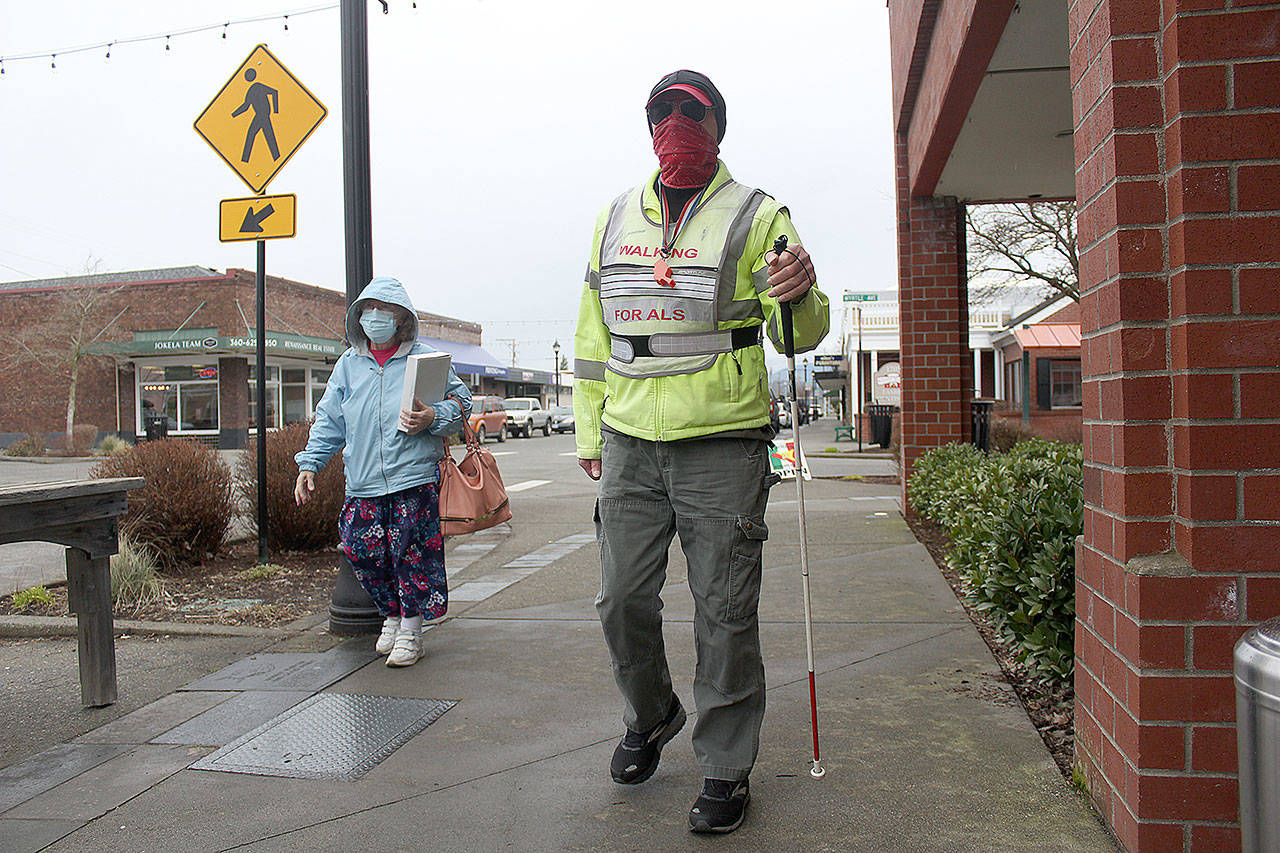The Pacing Parson is back on his feet.
You may not know him by his name, Don Stevenson, but you may have seen him over the last two decades as he’s traversed not just South King County, but across the nation to raise awareness (and funds) for various causes.
In total, it’s likely Stevenson, 85, has walked more than 70,000 miles, including a 3,000-mile walk from Seattle to Portland, Maine.
This time around, though, he’s sticking to his Auburn neighborhood due to his health and partial blindness (funnily enough, this is not the first time Stevenson was walked blind; he did a 1,500-mile walk in 2013 while blindfolded to raise money for the Washington Eye Institute).
Like his most recent walks in 2017 and 2018, Stevenson is walking to raise money for the Evergreen ALS Chapter, which supports people diagnosed with Amyotrophic Lateral Sclerosis, also known as Lou Gehrig disease.
Stevenson is also walking in memory of his personal friend, Mark Alleman, who died of ALS recently. Three years ago, Stevenson raised roughly $8,000 to take Alleman on the trip of his dreams to the Grand Canyon.
“He had a good attitude, even up to the time he wasn’t able to do anything except just lay there. He’d always manage to smile, and he’s say positive things. He was well-loved by his people,” Stevenson said. “I was going to raise money for his wife, but she said she would much rather get the money donated for ALS research.”
The walk began late November 2020, and at a pace of about 10 miles a day, Stevenson hopes to complete 300 miles by St. Patrick’s Day.
“I’ve got to get that corned beef and cabbage,” he said.
Stevenson hopes to raise $4,000 for the Evergreen ALS Chapter; to donate, you can call the organization at 425-646-1650 or head to http://webwa.alsa.org/. Stevenson asks that all donations be made in honor of Alleman.
What is ALS?
Lou Gehrig disease is not just one, but a group of neurological diseases that involve the neurons that control voluntary muscle movement in the brain.
Overtime, these neurons degenerate or die, and muscles no longer receive messages from the brain to move. It starts slowly but eventually, voluntary muscle movement becomes impossible.
It’s estimated between 14,000 to 15,000 Americans have Lou Gehrig disease, according to the National Institute of Neurological Disorders and Stroke, and most people with the disease die from respiratory failure within 3 to 5 years of symptoms first appearing.
Amyotrophic Lateral Sclerosis was first discovered in 1869, but was made more famous by baseball player Henry Louis Gehrig in 1939, when he voluntarily removed himself from the New York Yankees lineup due to the disease. Gehrig died two years later.


